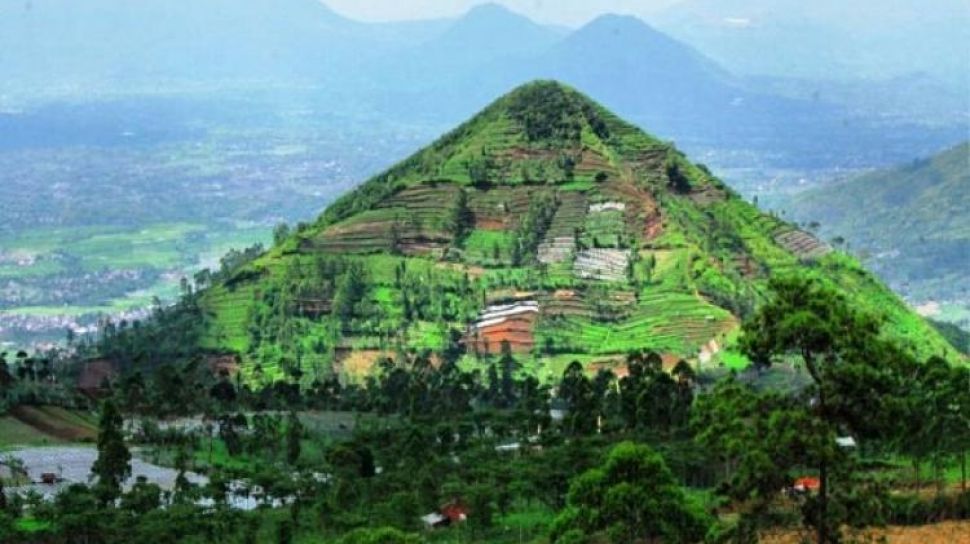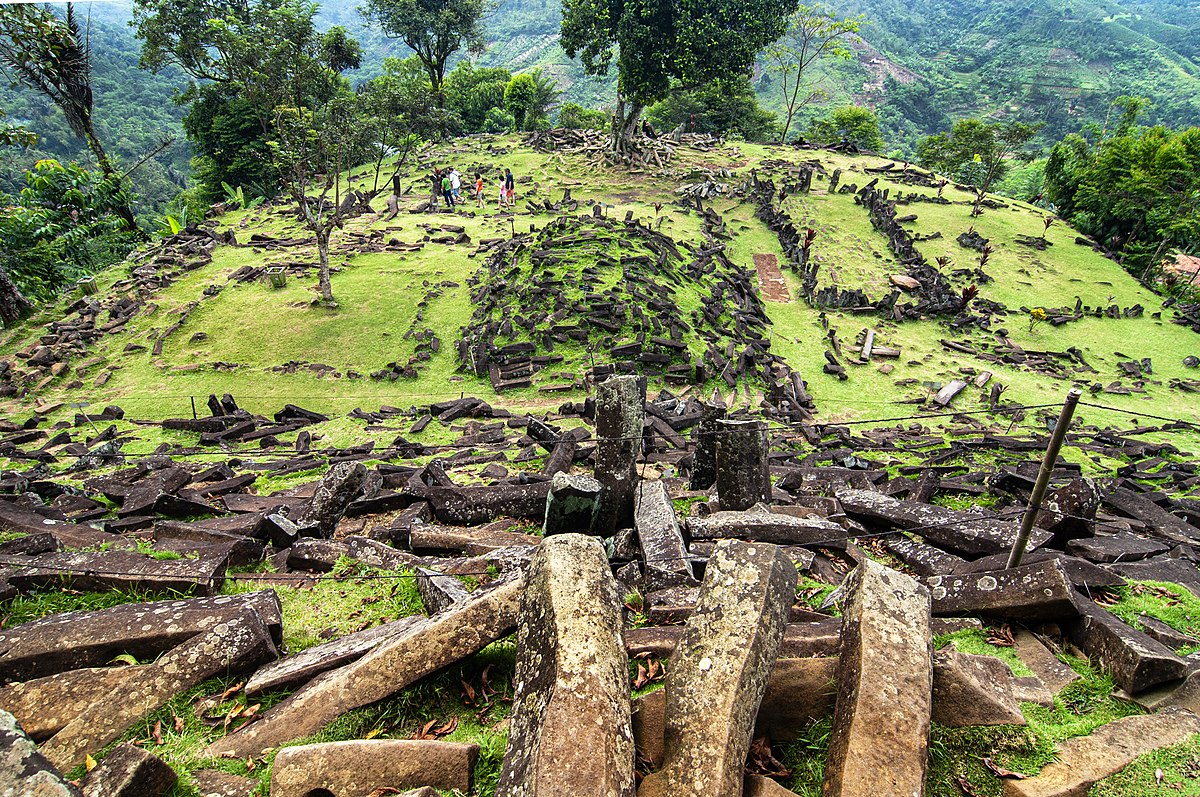Nestled in the highlands of West Java, Indonesia, Gunung Padang has become one of Southeast Asia’s most enigmatic archaeological sites. Often referred to as the “Indonesian Machu Picchu” or even “the oldest pyramid in the world” by some researchers, this site has captivated archaeologists, historians, and curious visitors alike. What makes Gunung Padang particularly intriguing is not just its age, but the mysteries surrounding its origin, purpose, and the civilization that built it.

Location and Discovery
Gunung Padang is located in Karyamukti Village, Cianjur Regency, about 120 kilometers south of Jakarta. The site sits at an elevation of about 885 meters above sea level and covers an area of around 3 hectares. It was first reported in 1914 by Dutch archaeologists, but serious research didn’t begin until the late 20th century. Since then, the site has increasingly drawn international attention due to claims that it may predate the Egyptian pyramids.
Structure and Features
At first glance, Gunung Padang appears to be a natural hill covered with columnar basalt stones. However, as researchers examined the site more closely, it became clear that the stones were arranged in terraces, with stairways and walls showing evidence of deliberate construction. The main structure consists of five terraces built on top of each other, with large rectangular volcanic rocks neatly placed to form walkways and boundaries.
Unlike other megalithic sites in Indonesia, Gunung Padang displays a high degree of organization and engineering skill. The stones are believed to have been transported from elsewhere, suggesting knowledge of transportation and construction techniques well ahead of their time.
Controversial Dating
One of the most debated aspects of Gunung Padang is its age. Traditional archaeological methods date the visible structures to around 2,500 to 4,000 years ago. However, controversial research led by Indonesian geologist Dr. Danny Hilman Natawidjaja and his team suggests that deeper layers of the site could be far older—possibly more than 10,000 years old.
Using ground-penetrating radar, core drilling, and carbon dating of organic materials found within the deeper layers, Natawidjaja claims the site may have been built in stages, starting as early as 20,000 BCE. If proven true, this would radically alter our understanding of ancient civilizations, potentially making Gunung Padang the oldest known pyramid-like structure in the world, older than Göbekli Tepe in Turkey.
However, the scientific community remains divided. Critics argue that the data has not been peer-reviewed adequately and that extraordinary claims require extraordinary evidence. Until further excavations and independent verifications are conducted, the true age of Gunung Padang remains speculative.
Cultural and Spiritual Significance
Beyond its archaeological importance, Gunung Padang holds cultural and spiritual significance for local communities. For centuries, it has been considered a sacred place by the Sundanese people. Traditional ceremonies and rituals are still performed at the site, especially during national holidays and significant cultural events.
The name “Gunung Padang” itself means “Mountain of Enlightenment” in the Sundanese language, suggesting its long-standing role as a spiritual center. Shamans and mystics often visit the site, believing it to be a source of powerful earth energy.
Conservation and Tourism
As interest in Gunung Padang grows, so does the concern for its preservation. The Indonesian government has declared it a national heritage site and has taken steps to regulate tourism and research activities. However, balancing conservation with public interest remains a challenge. Over-visitation, lack of infrastructure, and unregulated excavations could pose risks to the site’s integrity.
Efforts are underway to develop sustainable tourism that respects the site’s historical and cultural values. Information centers, guided tours, and educational programs have been introduced to enhance visitors’ understanding and appreciation.
The Mystery Remains
Whether Gunung Padang is a 4,000-year-old megalithic site or a 20,000-year-old prehistoric monument, it remains a symbol of Indonesia’s rich and complex past. As technology advances and more research unfolds, Gunung Padang may yet rewrite the narrative of human civilization.
In the meantime, it stands as a silent guardian over the lush highlands of West Java—a monument to ingenuity, belief, and the enduring mystery of the past.
